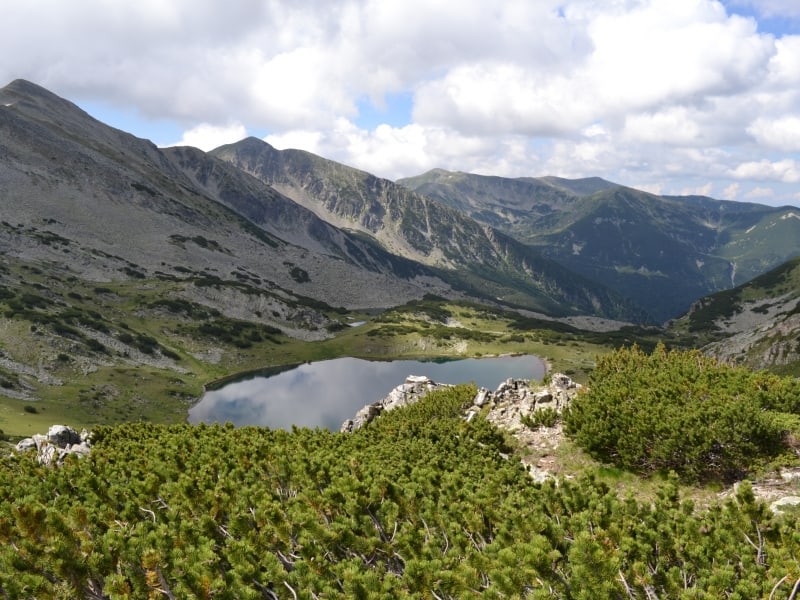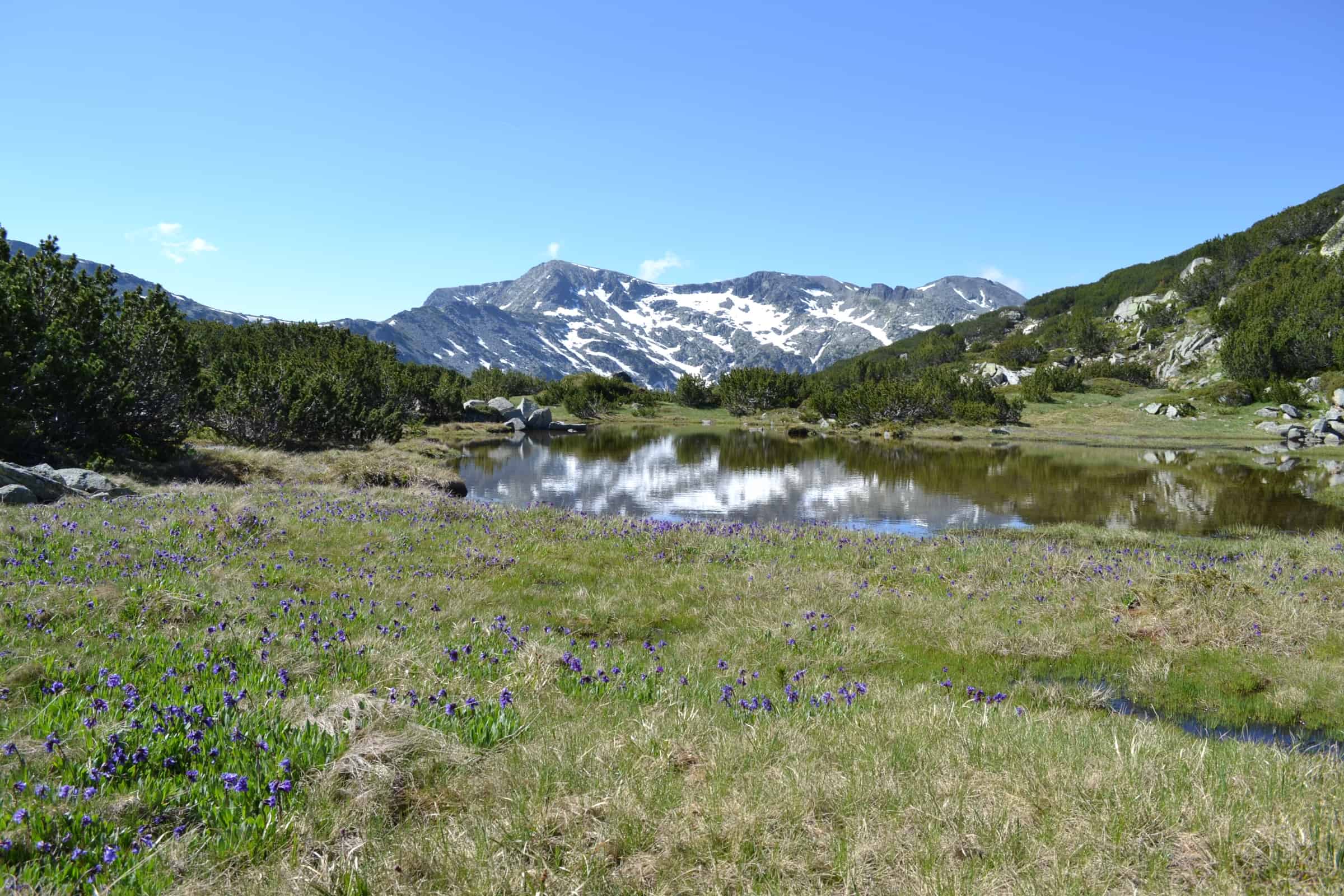A wealth of rare and protected wildlife species
Rila Monastery Nature Park covers the medium and the high mountain areas (750 m to 2,700 m altitude) of the west section of Rila Mountain. The highest point is Rilets peak with 2,713 m.
This nature park has an area of more than 25,000 ha. With more than 1 million visitors per year, it is the second most visited nature park in the country, after Vitosha Nature Park.
It was established in 1992 to protect and preserve the valuable plant and animal species as well as the remarkable diversity and beauty of the landscape and historical heritage.

Valuable natural heritage
Rila Monastery Nature Park occupies a mere one-quarter of one percent (0,25 %) of the country’s territory, but almost half of all plant species and about a third of all vertebrate species in Bulgaria can be found here. The area of the park may appear small, yet in terms of the number of rare and protected wildlife species that can be seen there, this nature park is superior to any other single piece of land in Bulgaria.
Together, Rila Monastery Nature Park and its neighbour Rila National Park form two large, inseparably linked protected areas. They constitute one of the most valuable pieces of natural heritage in Bulgaria.

Plant survivors of past geological ages
Rila Monastery Nature Park’s lands also provide a natural source for genetic information dating back to the Ice Age.
This natural repository is a gene pool that can assist in the reconstitution of disturbed ecosystems and serve as the source for the reintroduction of plants and animals to other sites.
Incredibly, more than 110 plant species in the nature park territory are survivors of past geological ages.
These species have sustained very few visible alterations as a result of changing environmental circumstances. This makes the Park one of the most valuable territories in the Balkan Peninsula for the conservation of relict flora.
Home of extremely rare wildlife species
The wealth of wildlife in the park has no equal in Bulgaria or Europe. It is home to some extremely rare wildlife species that are threatened with extinction both on a European and on a global scale. These include: The imperial eagle and the black vulture; the dormouse, otters, mole rats, and brown squirrels; and the wolf.

Rila Monastery Nature Park also preserves significant portions of the nation’s populations of high conservation significance wildlife species, such as the Dalmatian eagle, the mountain grouse, and the Balkan chamois.
Without such sanctuaries, many of these species would now be extinct as a result of human environmental exploitation.
Over 100 plants of extremely high conservation significance can also be encountered in the park, and it is home to 90 plant and six animal species that can only be found here and in a few other isolated spots throughout the Balkan Peninsula.

The park’s territory is of critical importance for preserving endemic species such as the Rila cowslip, the Rila rhubarb, St. John’s chamomile, southern white-backed woodpeckers, and Balkan larks.
Some of the oldest forests in Bulgaria
With the average age of their trees being 100 years – compared with 45 years in the rest of Bulgaria – Rila Monastery Nature Park’s forests are also among the oldest forests in the country.
What’s more, the park’s forests are almost entirely natural, and there are even some individual trees that are as old as 300 years!
The oldest and most valuable forests in the park’s territory are located within the Rila Monastery Forest Reserve. With an average age of 160 years overall, the reserve comprises some tracts of Macedonian pine and beech forests where trees average over 200 years of age!

The nature park is also the only place on earth where forest massifs of Rila oaks and King Boris’ firs are located, and it is the home of the oldest pristine Macedonian pine forests in the world.
Rila Monastery Nature Park is the highest water-yielding watershed in Bulgaria, and it is the most significant freshwater source for parts of the Thracian Plain as well as the country’s south-western region.
Owing to the favourable climate and the special conservation regime accorded to the Park’s forests and dwarf-pine zones, the area’s water resources and outflow are highly dependable. Twenty-eight lakes – including Bulgaria’s largest high-mountain lake, Smradlivoto (Stinky) Lake, are scattered throughout the territory, most of them having formed as a result of glacial activities.

Medicinal plants and edible mushrooms
With more than 200 species of medicinal plants growing in its boundaries, Rila Monastery Nature Park has a store of herbs for every pain. Many of these plants are used in the production of medicines for heart ailments, neuroses and dyspepsia, while others are used for general strengthening and revitalisation of the human system.
Also growing in the park are 28 species of edible mushrooms. The most popular of these – the edible boletus, the field mushroom, and the slippery jack – are especially tasty and of high commercial value.
Every summer and fall, to the benefit of local gatherers, the park yields an abundance of wild nuts and berries such as hazelnuts, bilberries, raspberries, briars, hawthorns, and blackberries.
Best seasons for travelling
Every season is good for travelling to Rila Monastery Nature Park. The highest number of visitors arrive in summer and autumn.

Highlights of the four seasons
- winter: snow and wonderful views
- spring: awakening nature, snowdrops and wild rivers
- summer: flowers on the alpine meadows
- autumn: colouring of the leaves and forest

What else can visitors do here?
This area is ideal for hiking, but there are also some famous sights and landmarks to see:
Rila Monastery
The Rila Monastery is often taken as the symbol of Bulgaria. It is the site every foreigner is taken to if s/he has but a spare minute in Sofia, and it is the image which appears among the first in any promotional publication about the country.

Every Bulgarian has been there at least once. Still, this jewel of religious architecture never ceases to amaze. People are fascinated not only by the harmonious beauty of the white-and-brown-reddish buildings, but also by the glorious setting in the hills of ever-wondrous Rila Mountains and the serene atmosphere.

Visit the monastery church, the defence tower of the local ruler Hrelyo, the two museums and the monastery shop.
Drink some of the ice-cold water from the monastery fountains.
By any means try the homemade bread and traditional bites of Mekitsa pastry offered by the small bakery behind the monastery. Then come back.
The Grave of St. Ivan Rilski
Several settlements fight for the honour of being the birthplace of Ivan Rilski, the saint who founded the Rila Monastery and has since been its patron. The place of his last resort is, however, indisputable.
The saint’s grave is to be found in Rila Mountains, if you take the road up from the Rila Monastery, park at the designated place and then climb up the path which the Directorate of Rila National Park marked as a Botany Trail some years ago.

There is a small temple and a cave where everyone can test his or her virtue by crawling up a vertical rocky tunnel. Virtue is confirmed if you manage to emerge from the hole intact.
The site is accessible in all seasons but you should wear appropriate attire for the mountains and not forget that Rila was also called the Water Mountain by the ancient inhabitants of these lands.
Stob Pyramids
The road to Stob Village is a deviation from the main road to Rila Monastery. But despite the fact that there is a sign to the Pyramids at the turn, not very many people go to visit. Not even acknowledging that visitor infrastructure was provided not long ago and now the access is much easier and safer than before.

Moreover, it is a pleasant walk with nice views, suitable even for small children. If you have a spare hour-and-a-half and some curiosity, we highly recommend you devote them to this site.
It is not of the rank of its much bigger brother, the site of Melnik Pyramids, but it is still worth it. The sandstone draperies can tell you any story you dare to see depicted in their mysterious shapes. It is a good challenge to anyone’s imagination.
Coming soon: Special guided tours for this area!
Photos and information courtesy of: Rila Monastery Nature Park Directorate









